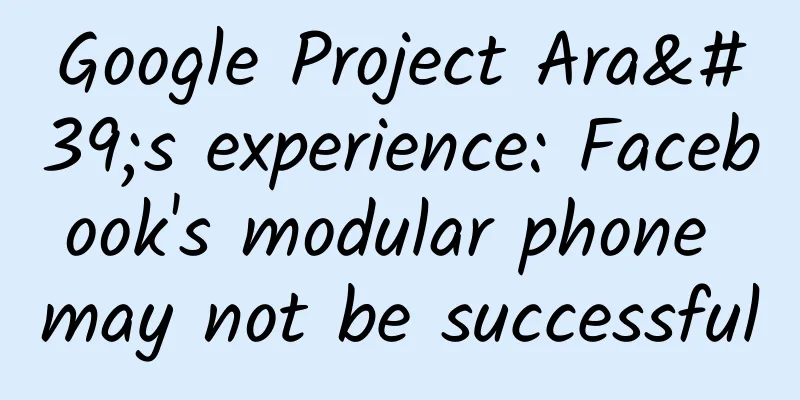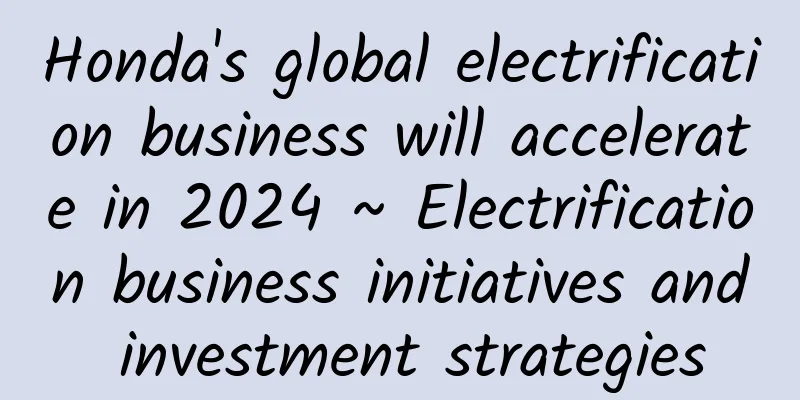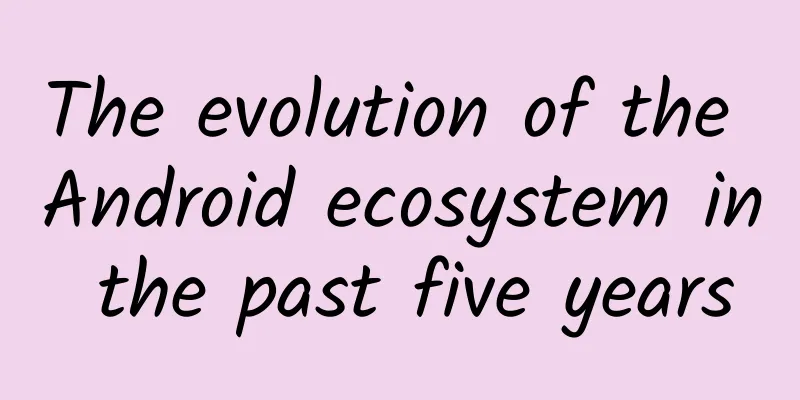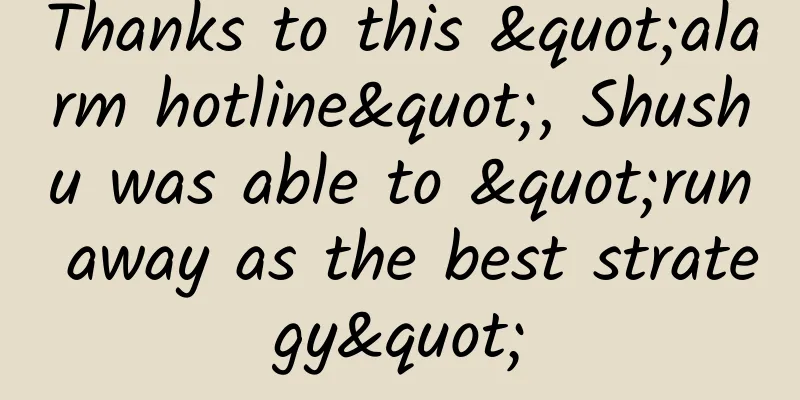Crazy investor or Ponzi scheme leader? Musk's investment portfolio tells you the answer
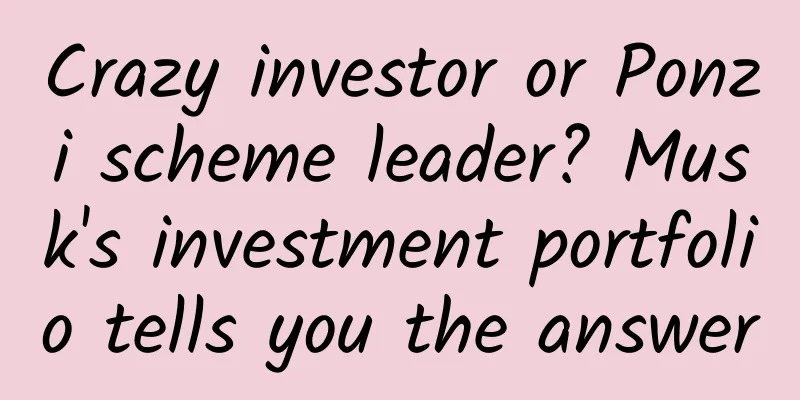
|
Since founding Zip2 22 years ago, Elon Musk has founded two other businesses and invested in numerous companies. In this article, I will set aside the numerous news reports surrounding Musk and the countless analysts pondering the possibility of self-driving cars or human colonization of Mars, and focus purely on Musk as an investor. What strategies and plans does he follow when he invests? What can we learn from his investment performance and success? This article will reveal it for you. First, we will analyze Elon Musk's investment and entrepreneurial events from a macro perspective, and then review the trends and strategies he follows. In our research, we found that Musk has been able to clearly learn from his mistakes and experiences to improve in future actions. Musk's investment timeline Phase 1: Musk as an early entrepreneur After dropping out of Stanford in 1995, Musk and his brother Kimbal founded Zip2 with $28,000 borrowed from their father. Zip2 is an online business yellow pages that contains business information and location, making it easier for others to find businesses. After venture capitalist Mohr Davidow invested $3 million, Musk was demoted to CTO and the business shifted to B2B products for the newspaper industry, a platform that helps traditional media publish content and information on the Internet. At this point, his stake was diluted to 7% and his influence over the business was diminished. Ultimately, Compaq acquired Zip2 for $307 million in 1999. Musk received $22 million from the deal. In November of the same year, Musk invested $10 million to create X.com, which was Musk's first attempt at online banking. In March 2000, X.com merged with its main competitor at the time, Peter Thiel's Confinity Platform. Later that year, Musk was once again forced to resign as CEO (although he remained on the board). X.com was renamed PayPal in 2001. By February 2002, PayPal went public. But eight months later it was acquired by eBay for $1.5 billion, and Musk made $180 million from the deal. Phase 2: Musk Wears Many Hats As with X.com, he didn’t waste any time after PayPal was acquired. Musk founded SpaceX the same year PayPal was acquired. Musk invested $6.35 million in Tesla's first round of financing in April 2004. Since then, Musk's operations and investments in Tesla have continued to increase, and his influence on Tesla has also increased. Although he did not "found" Tesla, his influence has continued to rise. In 2006, with Musk's advice and encouragement, his cousins Peter and Lyndon Rive founded SolarCity. Musk provided the initial capital and served as chairman. Musk continued to follow up on SolarCity's subsequent three rounds of financing between 2007 and 2012. 2008 was Musk's low point, but also the most critical year in his career. He was fighting on three fronts at the same time, trying to build three companies of huge scale and ambition. But at this time, he had financial problems. The funds from the sale of PayPal were almost spent, and the divorce also caused him to lose 20 million US dollars. But after borrowing money from his friend, Musk persisted and made unexpected gains in angel investment. Everdream and GameTrust, which he invested in, were acquired one after another, which allowed Musk to exit successfully. Stage 3: Conglomerate Leaders Following Tesla, SpaceX also got on the right track. The successful rocket test launch brought it business, and SpaceX gradually gained market recognition. Musk's three companies also began to slowly become intertwined, and they had contracts with each other. In fact, although SolarCity went public in 2012, four years later, SolarCity successfully merged with Tesla, with obvious synergies and vertical integration opportunities gaining support from 85% of shareholders. During this period, Musk's angel investments shifted to startups focused on artificial intelligence and biotechnology. He received a huge return of $92 million from his investment in DeepMind (now acquired by Google), and has invested in Halcyon Molecular, Vicarious and NeuroVigil in related fields since 2010. His net worth has grown significantly, from $2 billion in 2012 to $16 billion in 2017 (source: Forbes). Tesla's stock price also skyrocketed after the launch of Model 3, paving the way for the mass consumer electric vehicle market. While still privately held, SpaceX raised a funding round in July 2017 at a valuation of $21.2 billion. The rapid growth trajectory of his net worth over the past six years is shown in the following chart:
Here’s a timeline of Musk’s investment activity, showing money flowing in and out. The data comes from Crunchbase, Pitchbook, and news reports: The following table lists the profiles of the companies he has invested in or founded. Musk's only investment company that has completely failed is Halcyon Molecular, which spent all its investors' money and closed within two years. Of his exits, two brought him huge returns (Everdream and DeepMind), and two recovered his investment (GameTrust and OneRiot). In his current portfolio, Stripe has already brought him a lot of paper returns on investment. In addition, Musk has invested in Mahalo (later renamed Inside.com) for more than 10 years. Although the company has undergone several transformations, it seems unlikely to bring Musk a significant return on investment in the short term. Lessons learned: 1. He is always all-in; he never gives up control I think Musk learned important lessons about managing and controlling a business from his experiences at Zip2 and PayPal. The introduction of external venture capital and the dilution of his own shares left Musk powerless to resist being deprived of his position as Zip2 CEO. Although the successful sale of the company made him a wealthy man, the results disappointed Musk because he was unable to make the company fit his vision, and at PayPal, he was ousted. He once said: "They should put me in charge of the entire company. VC or professional managers will never bring great things. They are capable, but they have no creativity or insight, at least most VC or professional managers are like this." Throughout his subsequent career, Musk exercised tight control over the companies he invested in. He only invests in Tesla to maintain his equity percentage. In addition, during a dispute with Tesla's top management, he even sacrificed his financial interests for control. Although Tesla was not strictly founded by him, Musk's methods and influence eventually led him to become Tesla's CEO in 2008. Light on cash, heavy on assets: Musk continues to reinvest his assets into venture capital investments. In a normal investment portfolio, analysts generally recommend that 2% of assets be used for venture capital funds, but Musk disagrees. He believes that the money earned from the exit of a startup should be reinvested in a new startup and investment. The chart below shows how Musk's 'investment performance' has changed, showing his investments and earnings (only exit earnings are included). After selling PayPal, we can see where he spent most of his earnings over the past decade. It’s also worth noting that he hasn’t yet seen a big exit from SpaceX, SolarCity, or Tesla. SpaceX remains a private company; Musk sold no shares after SolarCity's IPO, while he made $15 million when Tesla went public, and to this day, he has never reduced his stake in Tesla. In 2010, when Musk's divorce legal documents were leaked, we found that he had run out of cash in 2010 because he was constantly investing in several companies at the same time. So although he had a lot of account wealth, he lacked liquid assets. During Tesla's most difficult period in 2008, he even sold his shares in Everdream and invested the funds in Tesla's next round of financing. Musk believes that "if I want investors to invest, then I think I should invest my own money first." He is willing to take extreme personal financial risks: As of March 2017, Musk's personal loans totaled $624 million, mainly used to invest in Tesla. His loans were collateralized by his Tesla shares. Goldman Sachs and Morgan Stanley are the main lenders, and both institutions have undertaken many of Tesla's transactions in the capital market. The following figure shows the changes in Musk's personal loans: Musk obtained a $150 million personal loan from Goldman Sachs to purchase new shares in Tesla financing. In this way, Musk transferred part of Tesla's loan to his personal balance sheet. In addition to investing most of his assets in his business, Musk also borrowed a lot of money. Because he takes very little salary, his goals are completely consistent with shareholder value. As a key figure in the company, investors will feel reassured when they see Musk continue to inject funds. If Tesla's stock price performs poorly, Musk will face very high risks. 2. Musk has created an ecosystem around him The companies that Musk has invested in are very interesting. From the perspective of stage, they range from angel to D round, but A round seems to be his favorite round to enter. His early investments were mainly made with people he knew: 2003 - Everdream - Founder Lyndon Rive is Musk's cousin. Rive later co-founded SolarCity. 2005 - GameTrust - Founder Adeo Ressi was Musk's roommate at the University of Pennsylvania. 2007 - Mahalo - Founder Jason Calacanis and Musk are friends with GameTrust founder Adeo Ressi and PayPal COO David Sacks. 2007 - OneRiot - founder KimbalMusk is Musk's younger brother. 2010 - Halcyon Molecular - Musk co-invested with Peter Thiel. 2014 – Deepmind and Vicarious – Musk has many personal relationships with the founders of these two companies. Musk invests in areas he understands and people he knows and trusts. Through this natural rapport, he can have more influence on the projects he invests in. These established networks will also provide help when Musk needs it. The whole is greater than the sum of its parts: SpaceX, Tesla and SolarCity have some overlap, and Musk is at the core of this overlap. The three companies have some common personnel, investors, development goals or business transactions: Musk further strengthened the connection by brokering a merger between Tesla and SolarCity, which resulted in $150 million in cost savings in the first year after the merger, thanks to synergies and economies of scale. The merger was for a larger goal, which was to vertically integrate all processes of these companies, share resources, and cross-sell to customers. Tesla's board of directors sums it up like this: 'We will be the world's only vertically integrated energy company, providing customers with an end-to-end clean energy product. Starting with the energy you use to drive and charge your car, and extending to the rest of the energy you use in your home or business.' Since 2000, Musk has been operating three different companies directly or indirectly, and merging two of them has become Musk's standard operating procedure. Given that both companies are in emerging markets, the merger doubles Musk's risks and potential rewards. In some ways, Musk's company is a lot like the Japanese conglomerates, joint ventures with various business relationships among them. SpaceX has purchased more than $255 million in SolarCity bonds. SolarCity's business model requires cash to finance its activities, while SpaceX, which gets most of its funding from financing or prepaid contracts, usually has a lot of cash on its books. By purchasing SolarCity's bonds, SpaceX also gets attractive returns, while SolarCity gets cash flow. Musk himself also bought a $65 million bond. SolarCity's financing plan itself is an innovative financing solution. SolarCity acquired the fintech company CommonAssets in January 2014 to build an online platform that allows retail investors to buy corporate bonds. The Boring Company is the latest company founded by Musk, which mainly solves ground transportation problems through underground tunnels. At the same time, Musk has confirmed that the Boring Company will participate in the excavation and construction of the Hyperloop super high-speed rail tunnel. In 2013, Musk proposed the concept of hyperloop in a 58-page white paper titled "The Origin of Hyperloop". 3. Musk uses innovative financing methods Government funding As of the summer of 2015, Tesla, SpaceX, and SolarCity had received a total of $4.9 billion in government funding. None of the government money Musk has received is charity; the Nevada and New York factories are tied to performance targets and spending commitments, and contain punitive 'clawback' provisions. The following chart shows the final distribution of these funds. 30% of them are actually returned to consumers through tax cuts and rebates to encourage consumers to use renewable energy. Musk's company would also benefit because it would allow him to make his products more cost-effective. SpaceX receives much less funding from the government, but the government is SpaceX's largest customer. A $1.6 billion contract with NASA in 2008 saved SpaceX from crisis. Maintaining good relations with government agencies is crucial to SpaceX because huge contracts from government agencies provide financial support for SpaceX's operations. Outsourced Financing In recent years, Musk has been pursuing an open research approach. Because Musk is so high-profile, we think it is a smart way to make his ideas public, so that he can outsource R&D cheaper and faster. In August 2013, Tesla released a white paper titled Hyperloop Alpha, detailing Tesla's initial research and concepts and its potential to revolutionize transportation. It was a no-strings-attached invitation to any company to build products based on the idea, a gesture of goodwill that captured the public’s imagination and led to the emergence of a new breed of Hyperloop startups. This is a very smart approach. In January 2017, Musk invested in Hyperloop Transpartation Technologies, a company founded in 2014 that is conducting the Hyperloop project through crowdsourcing. In this way, Musk does not need to participate in the initial heavy work, but can wait for start-ups in this field to emerge and then choose to invest. In addition to open sourcing the Hyperloop idea, Tesla open sourced all of its patents in 2014. This was an indirect way of inviting others to participate in research and development, ultimately helping Tesla and saving money through long-term improvements to its ecosystem. A maverick dilettante or an original innovator? Musk's methods and attitudes have been criticized. Corporate governance and conflicts of interest are two issues Musk faces. In April 2017, Tesla's public investors wrote to Musk, expressing concerns about Tesla's corporate governance. Tesla's directors are only elected every three years and remain largely unchanged from before the IPO, with some ties to Musk's other companies. Many commentators believe that Musk is just a hype man and his business is a Ponzi scheme. Musk is often rated as the best CEO on social media and his open and candid personality has gained him many followers. His comments on Tesla's stock price are 'strangely accurate'. This has once again raised concerns about Musk's 'undue influence'. In our view, Musk is a victim of running a public company. Tesla is a car company and is viewed as a high-growth technology company. Musk's strategy shows that, like all private company CEOs, he will do whatever it takes to ensure the financial security of his business. He plans to hold off on an IPO until SpaceX has regular flights to Mars, and will instead focus on growing his business. As a winner of Toutiao's Qingyun Plan and Baijiahao's Bai+ Plan, the 2019 Baidu Digital Author of the Year, the Baijiahao's Most Popular Author in the Technology Field, the 2019 Sogou Technology and Culture Author, and the 2021 Baijiahao Quarterly Influential Creator, he has won many awards, including the 2013 Sohu Best Industry Media Person, the 2015 China New Media Entrepreneurship Competition Beijing Third Place, the 2015 Guangmang Experience Award, the 2015 China New Media Entrepreneurship Competition Finals Third Place, and the 2018 Baidu Dynamic Annual Powerful Celebrity. |
Recommend
The Secret of the World Behind the Screen: Defeat the "Mysterious Man" and Protect Your Online Privacy
Source: Ni Xiaojiang & Jing'an CDC...
People with these 7 traits are mentally strong
References [1] racy S. Hutchinson, Ph.D. 7 Signs ...
Android source code warehouse management
Source code introduction A simple warehouse manag...
The mustard you eat may be fake! 1 trick to help you choose the right one →
Remember the first time you ate mustard? A "...
Zhihu product disassembly and analysis!
"I'm in the United States, just got off ...
How to tap into high-value customers through different channels?
Before their first contact with a salesperson, co...
Not only are these foods not "toxic" after sprouting, they may also have higher nutritional value. Don't waste them!
This article was reviewed by Zhang Zhaomin, Maste...
There are more and more strange-looking dogs, some even look like aliens. Why is this happening?
There are many kinds of pet dogs nowadays, with s...
This food has 7 or 8 times more calcium than milk! Unfortunately, many people don’t eat it right.
Expert of this article: Zhang Zhaomin, Master of ...
Apple's hardcore fans complain: software quality is declining
[[126181]] Marco Arment, who enjoys a high reputa...
After more than ten years, the Three Gorges Dam is still as solid as new. What’s the secret?
What is the largest hydroelectric project in the ...
Tik Tok operation and promotion, skills to create Tik Tok hits from 0-1!
In the 5G era, the biggest marketing is TikTok ma...
Heavy rains hit South China, and the fourth-level emergency response for flood control was launched! How to prevent floods scientifically?
The reporter learned from the Ministry of Emergen...
Southwest Associated University: When the Stars Shine
Southwest Associated University: When the Stars S...

